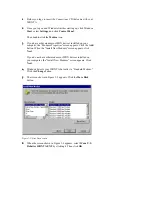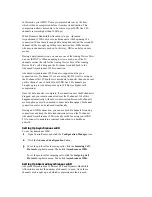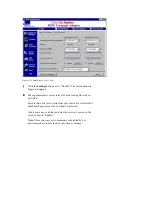
The “Endpoint Discriminator” drop-down menu is set to
“Automatically Assigned” by default.
Do not change this setting unless specifically told to do so by the
person who administrates the device or network you are connecting to.
BACP/BAP
The Bandwidth Allocation Control Protocol (BACP) and Bandwidth
Allocation Protocol (BAP) are used to negotiate bandwidth allocation
with the server your ISDN TA is connected to.
By default, this option is enabled. (A check mark appears in the box
next to “Enable BACP/BAP.”)
If BACP/BAP is not needed during a given connection, it will not be
used, even if it is enabled.
There are two items listed in this section:
Local Dial-Out Prefix – Any prefix that must precede the phone
number returned by the server during BACP/BAP negotiation
should be typed in this text box. (For example, if your ISDN TA
must dial nine to get an outside line.)
Long Distance Dial-Out Prefix – Any long distance prefix that
must precede the phone number returned by the server during
BACP/BAP negotiation should be typed in this text box.
Using Dynamic Bandwidth Allocation
Dynamic Bandwidth Allocation (DBA) monitors the data traffic on the
B-channels of your ISDN line. When traffic is light, DBA turns off one
of the B-channels. When traffic is heavy, it turns that B-channel on
again.
In this way, DBA helps ensure that your ISDN connection is being
used to its fullest potential. At the same time, it prevents the
unnecessary cost of keeping two B-channels turned on even when data
traffic is light enough to be handled by one.
To adjust your Dynamic Bandwidth Allocation settings:
1
Open ControlCenter. Click the Configuration Manager icon.
2
Click the Advanced Configuration button.
3
Click the PPP Settings button.
In the “PPP Mode” drop-down menu, be sure that MultiLink
PPP with Dynamic Bandwidth Allocation is selected.
4
Click the Dynamic Bandwidth button.
5
Your ISDN line’s two B-channels are represented on the “B-
channel Threshold Settings” screen, which is shown in Figure 5-3.






























